Top Things to Do in Cairo: The Ultimate 3-Day Itinerary for First-Time Visitors
Cairo, the heart of Egypt, is a city full of history, culture, and unforgettable experiences. From the world-famous Pyramids of Giza to hidden gems in Islamic and Coptic Cairo, this vibrant city has something for every traveler.
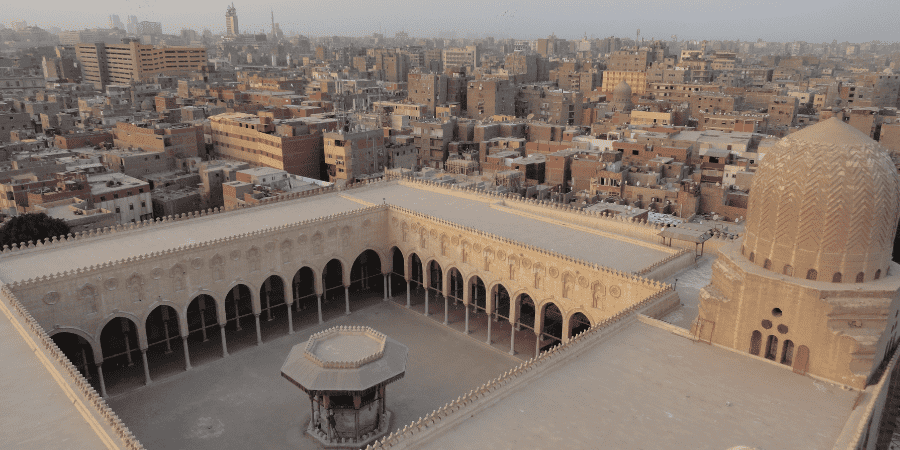
Having visited Cairo more than ten times, I’ve explored its top attractions, discovered local secrets, and enjoyed its rich food scene. Many visitors rush through Cairo in just a day or two, but spending at least three days allows you to truly experience its charm.
In this ultimate 3-day Cairo itinerary, I’ll guide you through the best things to do in Cairo, including must-visit landmarks, cultural sites, and unique experiences. Whether you’re a history lover, a foodie, or an adventure seeker, this itinerary will help you make the most of your trip to the “Mother of the World” (Um el Donya).
Let’s dive into the best way to explore Cairo in 3 days!
Day 1: Ancient Wonders & Iconic Landmarks
Morning: Visit the Pyramids of Giza & Sphinx
No trip to Cairo is complete without visiting the Pyramids of Giza and the iconic Great Sphinx. These ancient wonders are among the Seven Wonders of the Ancient World and continue to captivate travelers with their grandeur and mystery.
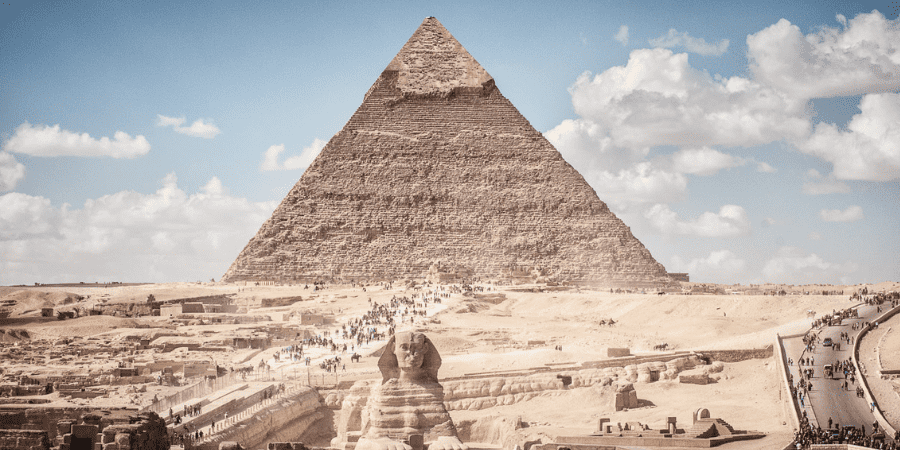
Standing before the pyramids is an unforgettable experience—one that truly takes your breath away. From the massive Great Pyramid of Khufu to the smaller pyramids of Khafre and Menkaure, this site is a testament to Egypt’s incredible history and engineering marvels.
To make the most of your visit, stay tuned! I’ll be sharing a detailed guide soon, covering practical tips, ticket prices, the best time to visit, and how to avoid scams at the Pyramids. Keep watching this space for updates!
Best time to visit (early morning for fewer crowds)
The best time to visit the Pyramids of Giza is early in the morning, right when they open at 8:00 AM (or 7:00 AM in the summer). Arriving early helps you:
✅ Avoid the crowds – Tour groups start arriving by mid-morning, so early visitors get a quieter, more enjoyable experience.
✅ Beat the heat – Cairo can get extremely hot, especially from late morning onward. An early start allows you to explore comfortably before temperatures soar.
✅ Capture the best photos – The morning light provides stunning views of the pyramids, and you won’t have to deal with large crowds in your shots.
Pro Tip: If you want an even more peaceful experience, visit during the winter months (November–February) when the weather is cooler, and there are fewer tourists.
Camel ride experience (optional)
A camel ride at the Pyramids of Giza is a unique and exciting way to experience this ancient wonder. As you ride across the golden sands with the majestic pyramids in the background, you’ll feel like you’ve stepped back in time.
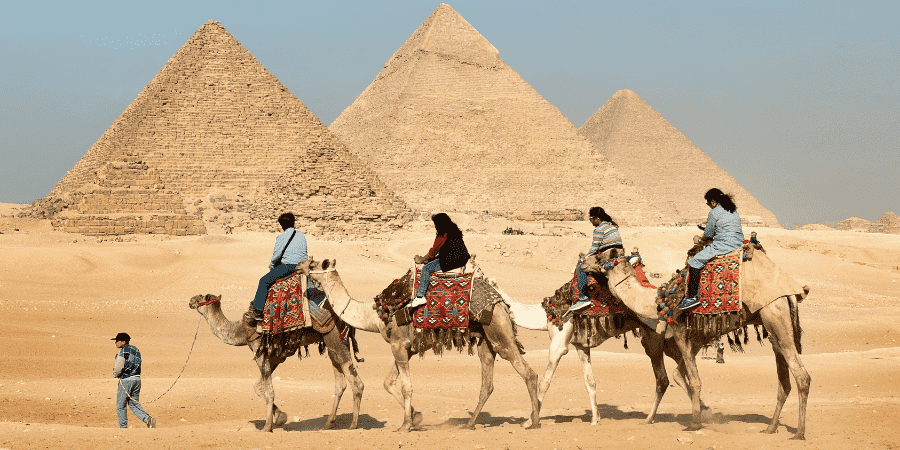
However, it’s important to be prepared before booking a ride. Always negotiate the price beforehand, as some handlers may overcharge tourists—a fair price is around 200-400 EGP ($6-$13) for a short ride. To ensure a safe and ethical experience, choose a reputable guide and avoid unofficial camel handlers near the entrance.
Also, be mindful of animal welfare by selecting a tour operator that treats their camels well. If riding a camel isn’t your thing, you can opt for a horse-drawn carriage or simply walk around to take in the breathtaking views of the pyramids.
Lunch: Eat at a local Egyptian restaurant
After exploring the Pyramids of Giza, refuel with a delicious meal at a local Egyptian restaurant. Cairo is home to some fantastic spots where you can enjoy authentic Egyptian cuisine, from traditional street food to full-course meals. Here are a few great options near the pyramids and within Cairo:
- Felfela – A legendary spot known for its falafel (taameya), koshary, and shawarma. A great place to try classic Egyptian flavors.
- Abou Tarek – One of the best places in Cairo to try koshary, Egypt’s beloved street food made of rice, lentils, pasta, and crispy onions.
- Kebdet El Prince – A local favorite serving grilled meats, liver dishes, and traditional Egyptian stews. A must-visit for meat lovers.
- Andrea Mariouteya – Located near the pyramids, this restaurant offers grilled chicken, lamb chops, and fresh-baked bread with stunning outdoor seating.
- Zitouni (at the Four Seasons Hotel) – If you’re looking for an upscale experience, Zitouni serves high-quality Egyptian dishes in a beautiful setting.
Pro Tip: Try fresh sugarcane juice or a cold hibiscus tea with your meal for a refreshing local touch!
Afternoon: Saqqara & Memphis
A visit to Saqqara and Memphis offers a deeper dive into Egypt’s ancient history beyond the Pyramids of Giza. Saqqara is home to the Step Pyramid of King Djoser, the oldest pyramid in Egypt, dating back over 4,600 years. This vast archaeological site also includes beautifully preserved tombs with intricate carvings and hieroglyphs.
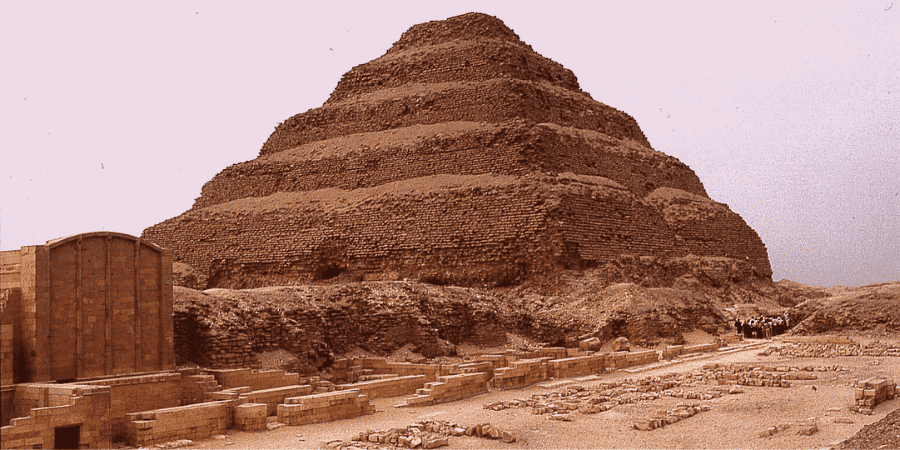
Not far from Saqqara, you’ll find the Dahshur Pyramids, including the Bent Pyramid and the Red Pyramid—some of the earliest attempts at pyramid construction. The Red Pyramid is considered the first true pyramid with smooth sides, offering an incredible look into the evolution of pyramid design.
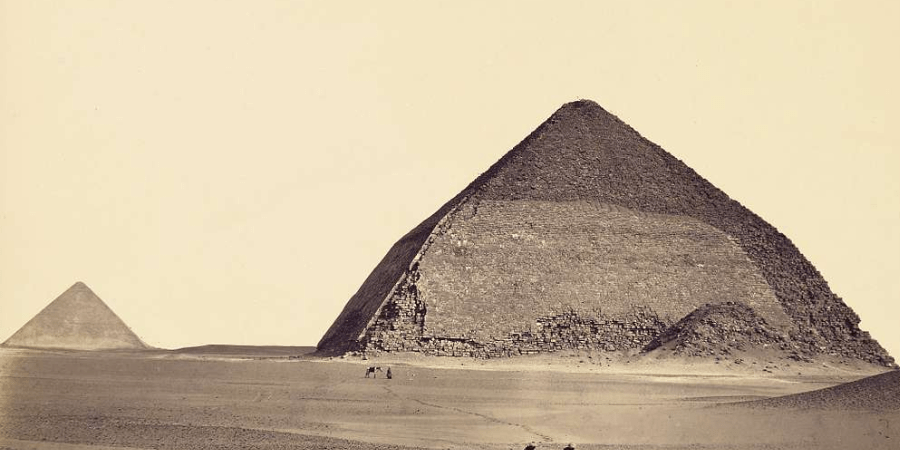
Finally, head to Memphis, the ancient capital of Egypt, where you can see the impressive alabaster Sphinx and the colossal statue of Ramses II. Once a thriving city, Memphis was a center of power and culture for thousands of years. A visit here provides an incredible perspective on Egypt’s royal history and architectural achievements.
Evening: Dinner with a view of the pyramids OR Nile dinner cruise
After a day of exploring Egypt’s ancient wonders, unwind with a memorable dinner experience. You have two fantastic options:
If you want to dine with a view of the Pyramids, head to a rooftop restaurant like 9 Pyramids Lounge or Mena House Hotel. These spots offer stunning views of the pyramids illuminated at night while you enjoy delicious Egyptian and Middle Eastern cuisine. It’s the perfect way to reflect on your day while soaking in the breathtaking scenery.
For a different experience, consider a Nile dinner cruise, where you can enjoy a buffet or à la carte meal while sailing along the famous River Nile. Many cruises, such as those by Nile Maxim or Andrea Maadi, feature live entertainment, including belly dancing and Tanoura (whirling dervish) performances. This is a fantastic way to experience Cairo’s vibrant nightlife while enjoying a relaxing evening on the water.
Pro Tip: If you prefer a quieter dining experience, opt for an early dinner at a rooftop restaurant, while those looking for live entertainment and a lively atmosphere will love the Nile cruise!
Day 2: Exploring Cairo’s Historic & Cultural Treasures
Morning: Egyptian Museum
Start your day by visiting the Egyptian Museum, home to the world’s most extensive collection of ancient Egyptian artifacts. Located in Downtown Cairo, this museum showcases treasures from King Tutankhamun’s tomb, colossal statues, intricate jewelry, and even real mummies. It’s a must-visit for history lovers who want to dive deeper into Egypt’s fascinating past.
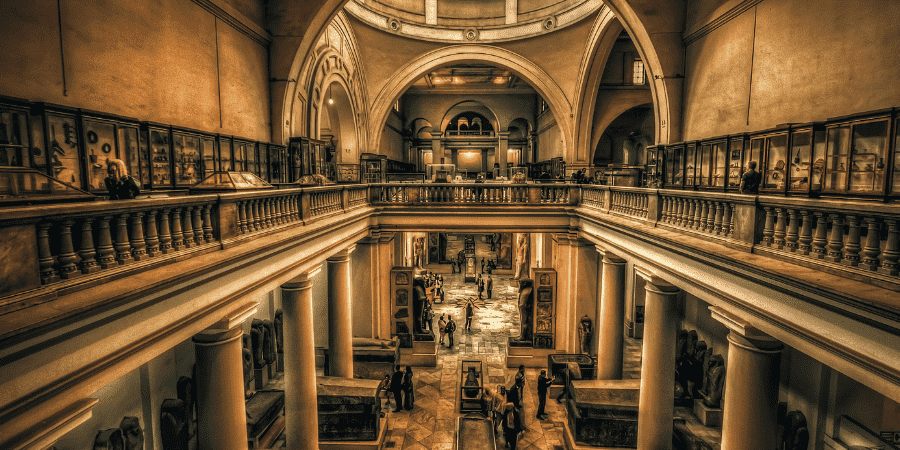
Right across the street from the museum is Tahrir Square, a historic site that played a major role in the 2011 Egyptian Revolution. While it’s not a traditional tourist attraction, it’s an important symbol of modern Egyptian history. Since it’s centrally located, you’ll likely pass by while exploring Downtown Cairo, but there’s no need to make a special trip just for it.
Pro Tip: If you’re visiting in 2024 or later, check if the Grand Egyptian Museum (GEM) in Giza has officially opened, as it will house many of the artifacts currently in the Egyptian Museum.
Must-see artifacts (King Tut’s treasures, Rosetta Stone, etc.)
The Egyptian Museum in Cairo is packed with priceless artifacts, but some exhibits are absolute must-sees:
- King Tutankhamun’s Treasures – The legendary golden death mask, jewelry, and burial items from Tutankhamun’s tomb are among the most famous artifacts in the world.
- Royal Mummies – See the preserved remains of ancient pharaohs, including Ramses II and Hatshepsut, in the museum’s Mummy Room.
- Rosetta Stone (Replica) – While the original is in the British Museum, the Egyptian Museum has a replica of the Rosetta Stone, which was key to deciphering ancient Egyptian hieroglyphs.
- Statue of Khafre – A beautifully crafted statue of Pharaoh Khafre, who built the second-largest pyramid at Giza.
- Narmer Palette – One of the oldest historical records, this artifact depicts the unification of Upper and Lower Egypt by King Narmer.
- Colossal Statues of Amenhotep III – These massive twin statues once stood at the entrance of Amenhotep III’s mortuary temple in Luxor.
- Akhenaten Collection – Unique statues of Pharaoh Akhenaten, known for his revolutionary shift to monotheism and the worship of the sun god Aten.
Pro Tip: The Grand Egyptian Museum (GEM) in Giza is set to house many of these treasures once fully open, so check in advance if certain exhibits have moved!
Lunch: Try Koshary or other local delicacies
After a morning at the Egyptian Museum, there’s nothing better than sitting down for a plate of Koshary, Egypt’s ultimate comfort food. The mix of rice, pasta, lentils, chickpeas, and crispy onions, topped with tangy tomato sauce, is surprisingly addictive. I still remember my first bite at Abou Tarek—the flavors were incredible, and the portion was huge!
If you’re not in the mood for Koshary, places like Felfela and Zooba serve amazing falafel (taameya), ful (fava bean stew), and hawawshi (spiced meat-stuffed bread). Whatever you choose, don’t forget to wash it down with a refreshing sugarcane juice or hibiscus tea—it’s the perfect way to cool off in Cairo’s heat!
Afternoon: Islamic Cairo Tour
Visit the Citadel of Saladin & Muhammad Ali Mosque
After lunch, head to the Citadel of Saladin, one of Cairo’s most iconic historical landmarks. Built in the 12th century by Sultan Saladin, this massive fortress was once the heart of Egypt’s military and government. The views from the top are incredible—you can see the entire city, and on a clear day, even the Pyramids of Giza in the distance.
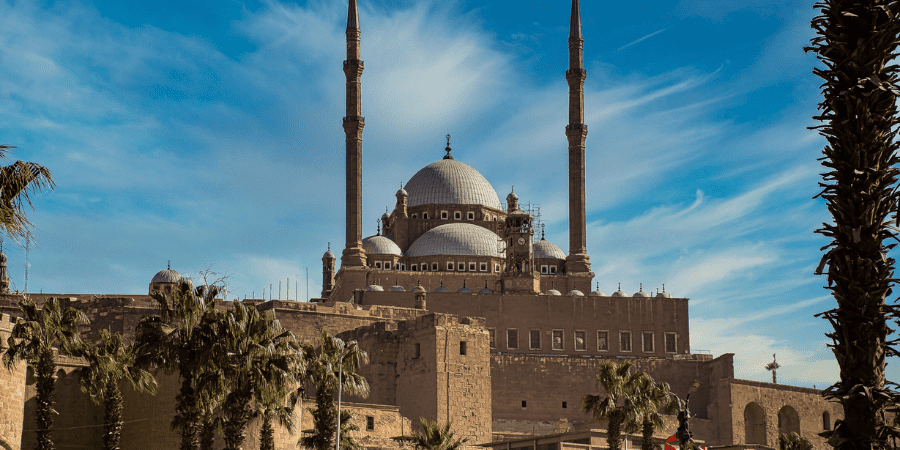
Inside the citadel, don’t miss the breathtaking Muhammad Ali Mosque, also known as the Alabaster Mosque. Its towering minarets and grand domes make it one of the most beautiful mosques in Egypt.

Stepping inside, I was amazed by the massive chandeliers and intricate Ottoman-style decorations. Whether you’re interested in history, architecture, or just want a panoramic view of Cairo, this is a must-visit spot!
Walk through Khan El Khalili Bazaar
No trip to Cairo is complete without a visit to Khan El Khalili Bazaar, one of the oldest and most vibrant markets in Egypt. Originally built in the 14th century as a mausoleum, it later became a caravanserai before transforming into the bustling bazaar it is today.
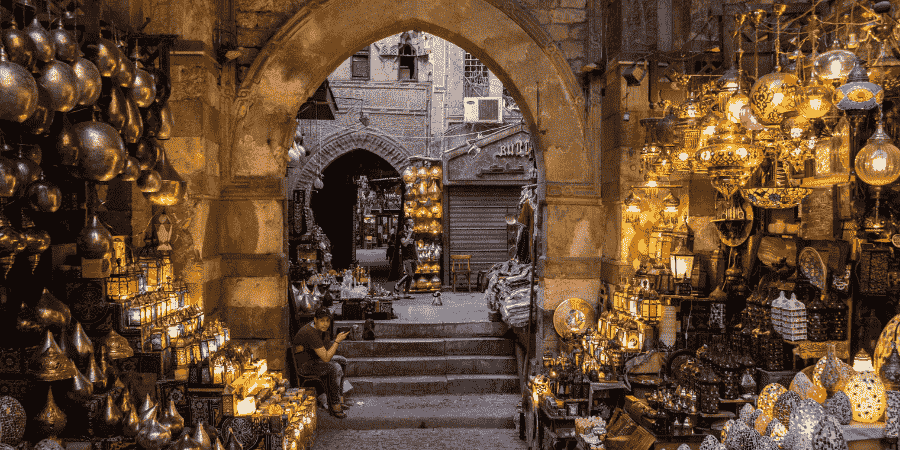
Walking through its narrow alleyways, you’ll find everything from handmade souvenirs and gold jewelry to fragrant spices and traditional lamps. The atmosphere is chaotic but exhilarating, with shopkeepers calling out their best deals and the scent of incense and fresh bread filling the air.
If you need a break from shopping, stop by El Fishawy, Cairo’s most famous café, for a cup of strong Egyptian coffee or mint tea. I loved sitting there, watching the world go by while listening to the distant hum of traders and street musicians. Whether you love or hate haggling, bargaining is a must here, so come prepared, embrace the energy, and soak in this unique slice of Egyptian culture!
Evening: Relax at Al-Azhar Park with sunset views
After the hustle and bustle of Khan El Khalili, unwind at Al-Azhar Park, a peaceful green oasis in the heart of Cairo. Walking in, I instantly felt a sense of calm—beautifully landscaped gardens, fountains, and flower beds make it a refreshing escape from the city’s chaos. Inspired by ancient Islamic gardens, the park is perfect for a leisurely stroll or just sitting back and enjoying the view.
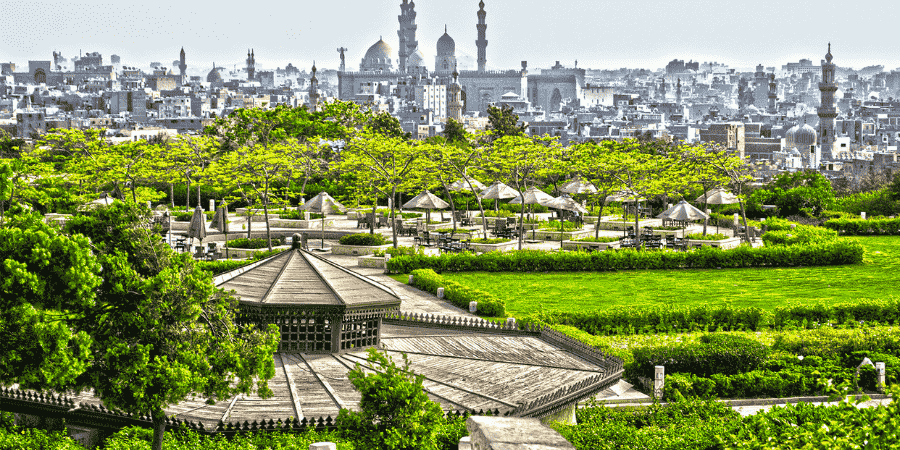
The real magic happens at sunset. From the park’s highest points, you get a breathtaking panoramic view of Cairo’s skyline, with the Citadel and minarets of historic mosques glowing in the golden light. It’s the perfect spot to reflect on the day while enjoying a cup of Egyptian tea from one of the cafés inside the park. After so much sightseeing, relaxing here felt like the perfect way to end the day.
Day 3: Coptic Cairo & Local Experiences
Morning: Coptic Cairo Tour
Even though Egypt is a predominantly Muslim country, Coptic Cairo offers a fascinating glimpse into the city’s rich Christian heritage. This historic district is home to some of the oldest churches, monasteries, and religious sites in Egypt. Wandering through the area, I was amazed by the mix of architectural styles, from ancient stone churches to beautifully decorated interiors.
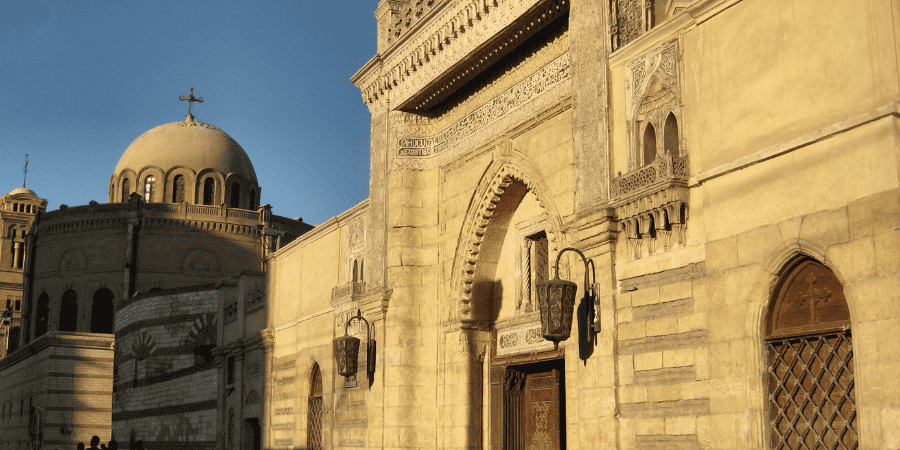
Must-visit sites include the Hanging Church, known for its stunning wooden ceiling shaped like Noah’s Ark, and the Coptic Museum, which houses an incredible collection of Christian artifacts, manuscripts, and artwork. The Ben Ezra Synagogue, believed to be where baby Moses was found, adds another layer of history to the area.
Coptic Cairo is easily reachable by metro (Mar Girgis station) or Uber, and you can explore it on your own with a good map. However, if you want deeper insights into the history and significance of each site, a guided tour is a great option. Either way, this part of Cairo offers a peaceful contrast to the city’s usual chaos and is well worth the visit!
Hanging Church, Church of St. Sergius, Ben Ezra Synagogue
Exploring Coptic Cairo is like stepping back in time, with its ancient churches, religious landmarks, and deep historical significance. Here are three must-visit sites:
- The Hanging Church (Saint Virgin Mary’s Coptic Orthodox Church) – One of Cairo’s most famous churches, it’s named for its unique location, suspended above a Roman fortress gate. Inside, the intricate wooden ceiling, designed like Noah’s Ark, and the stunning iconostasis (screen of icons) make it a breathtaking sight.
- Church of St. Sergius and Bacchus (Abu Serga) – This church is believed to be built over the cave where the Holy Family stayed during their flight to Egypt. Walking inside, I felt a deep sense of history, especially when seeing the underground crypt where Mary, Joseph, and baby Jesus are said to have taken refuge.
- Ben Ezra Synagogue – Originally a Coptic Christian church, this site was later converted into a synagogue and became one of the most significant Jewish landmarks in Cairo. Legend has it that this is the spot where baby Moses was found in the reeds of the Nile. Though no longer an active place of worship, its stunning carvings and historical importance make it a fascinating stop.
Each of these sites holds an incredible part of Egypt’s religious and cultural history, making Coptic Cairo a must-visit for history lovers and curious travelers alike.
Lunch: Nile-side café or restaurant
After a morning exploring Coptic Cairo, take a well-deserved break at a Nile-side café or restaurant. There’s nothing like enjoying a delicious meal with breezy river views and watching the boats glide by. One of my favorite spots is Sequoia, where you can relax with mezze, fresh seafood, and refreshing mint tea.
If you’re in the mood for something more casual, Le Pacha 1901 offers a variety of Egyptian and international dishes on a floating restaurant. Whether you go for a hearty grilled kebab or a light falafel wrap, the peaceful setting makes it a perfect midday escape.
Afternoon: Modern Cairo (Optional Activities)
Cairo Tower for panoramic views
For one of the best bird’s-eye views of Cairo, head to the Cairo Tower, standing 614 feet (187 meters) tall. A quick elevator ride takes you to the observation deck, where you can soak in 360-degree views of the city, including landmarks like Giza, Zamalek, and Downtown Cairo. On a clear day, you might even spot the Pyramids in the distance!

There’s also a revolving café at the top if you want to enjoy a drink or a light meal with the view. While it’s not necessarily a must-do (since Cairo has other great viewpoints), it’s still a cool experience—especially if you visit around sunset when the city lights start twinkling. Tickets currently cost 250 EGP, so check the latest prices before going!
Art & cultural spots (Abdeen Palace, Zamalek art galleries)
If you’re a fan of history and art, spend your afternoon exploring Abdeen Palace and Zamalek’s art scene.
Start with Abdeen Palace, a lavish former royal residence that now serves as one of the Egyptian president’s official homes. While most of the palace is off-limits, the ground-floor museums showcase fascinating collections, including the Presidential Gifts Museum, the Royal Family Museum, and the impressive Arms Museum.
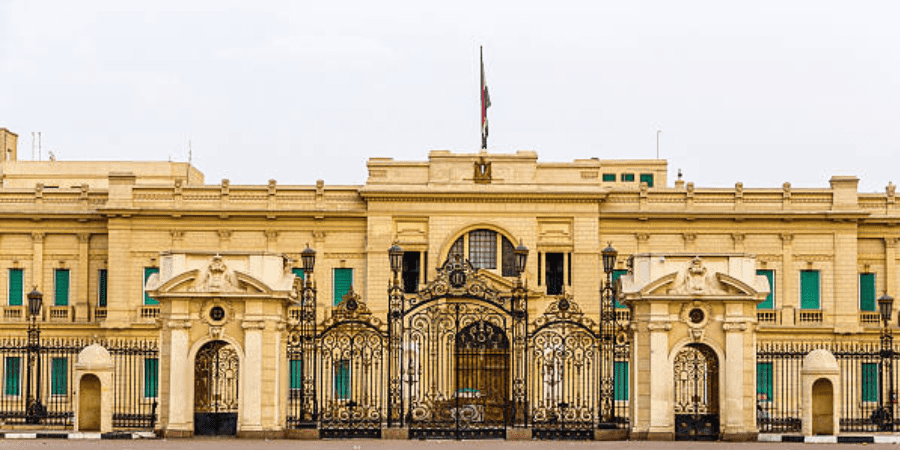
If you’re into military history, the Arms Museum is particularly worth a visit. Otherwise, unless you’re a history buff, Abdeen Palace isn’t a must-see. Entrance costs 100 EGP (as of January 2024).
For a more contemporary experience, head to Zamalek, Cairo’s artistic and cultural hub. The area is packed with boutique galleries and studios, showcasing everything from modern Egyptian art to traditional crafts.
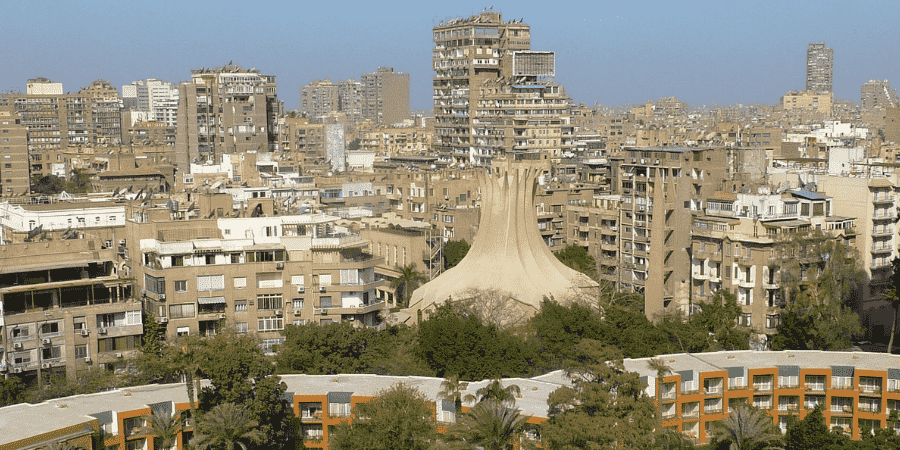
Some great spots to check out include Ubuntu Art Gallery, Picasso Art Gallery, and Zamalek Art Gallery. Walking through these creative spaces offers a refreshing contrast to Cairo’s ancient monuments and lets you see a different side of the city’s culture!
Evening: Farewell dinner at a rooftop restaurant
End your Cairo adventure with a memorable farewell dinner at a rooftop restaurant, where you can enjoy breathtaking city views while savoring delicious Egyptian cuisine. One of my favorite spots is Kebabgy at Sofitel Cairo, which overlooks the Nile and serves amazing grilled meats and traditional mezze.
For a more historic backdrop, try 9 Pyramids Lounge, where you can dine with a stunning view of the Giza Pyramids glowing under the night sky.
As you enjoy your final meal in Cairo, take a moment to soak in the city’s energy, history, and incredible food—a perfect way to say goodbye to this unforgettable destination!
Best Places to Stay in Cairo
Finding the right place to stay in Cairo depends on what kind of experience you’re looking for—luxury, history, or local charm. After visiting Cairo multiple times, I’ve stayed in different areas, each offering a unique vibe.
- For Luxury & Nile Views: The Nile Ritz-Carlton or Four Seasons Hotel Cairo – If you want 5-star comfort, these hotels are perfect. I once stayed at the Four Seasons Nile Plaza, and waking up to stunning river views was incredible. The service was top-notch, and their breakfast spread was one of the best I’ve had in Cairo!
- For a Historic Stay: Marriott Mena House – If you dream of waking up to the Pyramids, this is the place. The view from the garden rooms is surreal, and the hotel itself has an old-world charm with a rich history. It’s a bit pricier, but for a once-in-a-lifetime experience, it’s worth it.
- For a Budget-Friendly Stay: Steigenberger Hotel El Tahrir – Located in Downtown Cairo, this is a great mid-range option. I stayed here once when I wanted to explore the city on foot. It’s near the Egyptian Museum and metro stations, making it super convenient for sightseeing.
- For a Local & Boutique Experience: Villa Belle Époque – If you prefer a quiet, charming stay away from the chaos, this boutique hotel in Maadi is a hidden gem. The area is greener, more residential, and perfect if you want a relaxed atmosphere after a busy day in Cairo.
Each of these places has its own vibe, so whether you’re after luxury, history, or budget-friendly comfort, Cairo has something for everyone!
Final Thoughts
Cairo offers an unforgettable blend of ancient wonders, cultural treasures, and modern experiences. From the awe-inspiring Pyramids of Giza to the bustling alleys of Khan El Khalili, every moment in the city is a journey through time. Whether you’re exploring Coptic Cairo, enjoying a Nile dinner cruise, or admiring panoramic views from Cairo Tower, this 3-day itinerary ensures you make the most of your visit.
If you’re planning more adventures, consider exploring Cape Town Central for stunning landscapes and rich history or Tenerife for breathtaking beaches and volcanic wonders.

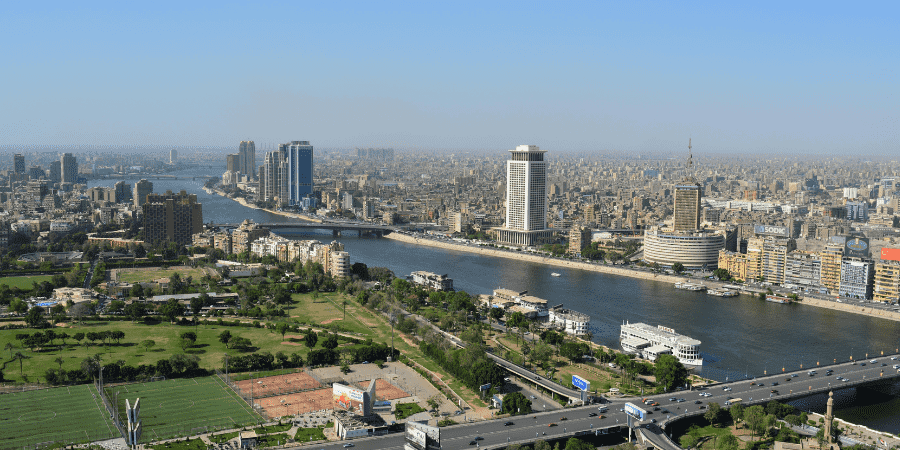
No responses yet